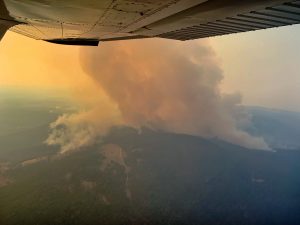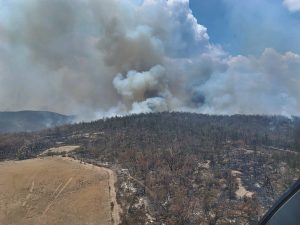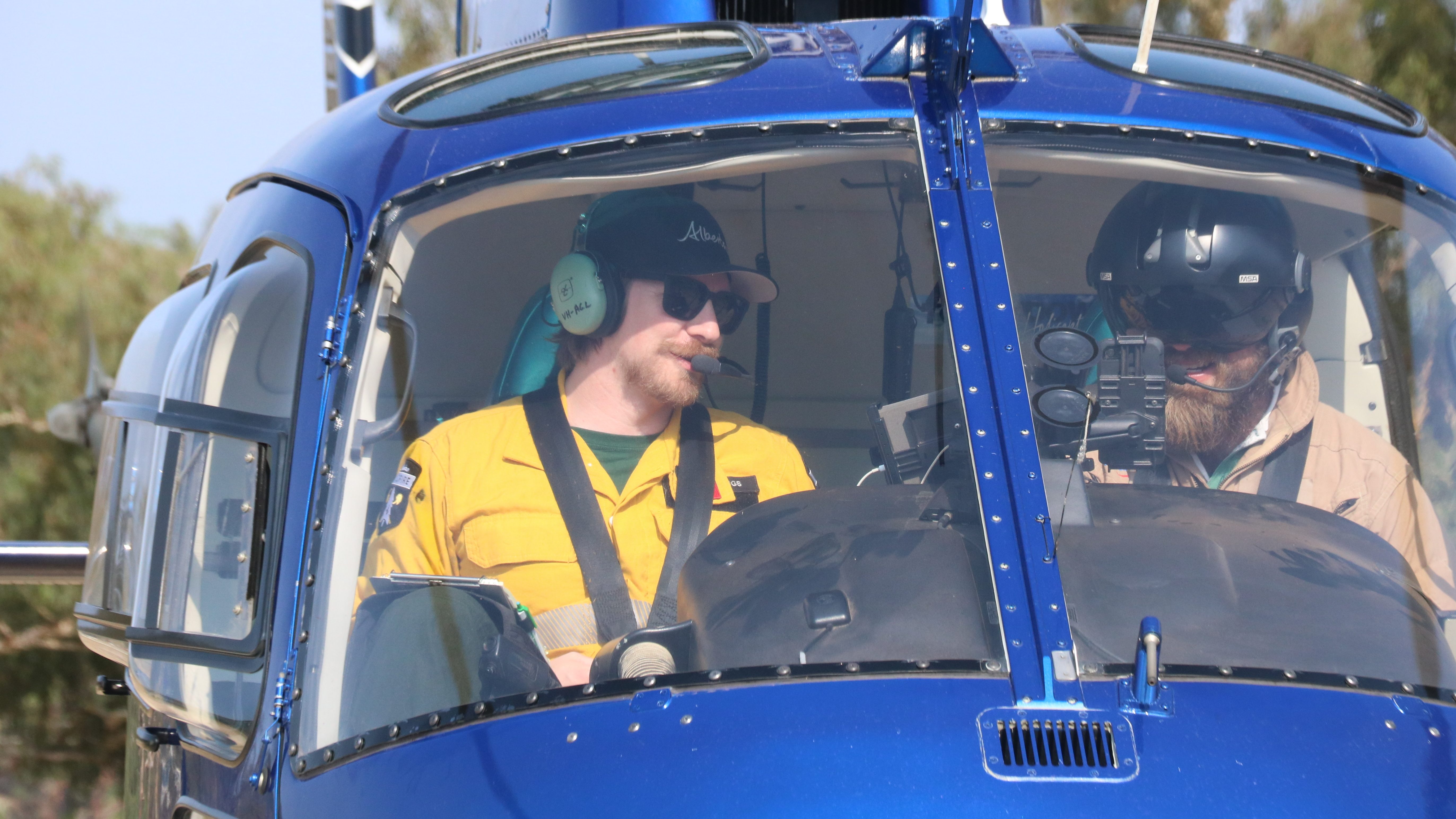A pair of Alberta Wildfire firefighters from Fort McMurray were sent to Australia to help with the bushfires.
Kent Jennings, a forest operations monitoring specialist left Fort McMurray on Dec. 19, 2019 and spent 35 days “down under” as an air base manager.
It was the longest time he has ever been away from home.
He was headed to Quirindi, a small town in the New South Whales region of Australia north of Tamworth, a city of 62,000, home to the second largest country music concert in the world which was happening during the time Jennings was there.
“It was a shame we didn’t get to go, it looked like a pretty fun time.”
On the flight down, he recalls thinking how difficult it would be to miss Christmas with his family.
“I was thinking about that a lot of the time and just trying to get out of the holiday, winter mindset and trying to get into the fire fighting mode,” said Jennings.
“We hadn’t been around any fires in a couple months so just trying to shift from Canada winter mode into Australia firefighting mode, and mostly just hoping my skills would transfer well in the different country and landscape and just trying to think of all the ways we could help out as much as we can.”
Originally Jennings was exported to Australia to supervise air base personnel, first aid operations, communications plans and coordinate pilot information.
Later he got the role of air observer.
“My role in that was to carry out visual recon of the bush fires from an aircraft and give updates on fire behaviour, any critical values at risk, mapping the fires we were working on and update the ground crews,” said Jennings. “I got to drive around a lot, I got to fly around a lot, and see the area we were working in, so it was really nice.”

Jennings recalls seeing a lot of different wildlife, flora and fauna, much different than what Canada has.
“It was definitely interesting flying around seeing all the different types of trees and lots of different animals, the fire was pretty intense to some of the stuff we’ve seen in Alberta.”

Something else he wasn’t used to seeing was the number of volunteers.
“A huge percentage of the firefighting workforce in New South Wales is volunteer, it’s upwards of 90 per cent.”
With Australia’s climate and longer wildfire season than Canada’s, the firefighters have their work cut out for them.
“When we got there around Christmas time and they had already been working on the fires since July/August and they still have another couple of months to go.”
The extreme drought was also something Jennings had never experienced before.
“In Northern Alberta we have lots of lakes, lots of rivers. With the drought in New South Wales that was going on, normally all these rivers and lakes and dams that would have water in them were completely dried out so that kind of changes the tactics on firefighting, you can’t use a helicopter or air bombers quite as often, that was quiet a big change.”
Despite all the changes Jennings had a lot of transferable skills from working in Fort McMurray.
In 2016 he worked as a strike team leader for the Horse River wildfire.
“That was more extreme up here just because of the size of the city that it effected. In Australia, where I was working, the fire wasn’t threatening any major towns and a benefit of the drought was that all the fields of grass were turned to dust and it gave us a bit of a barrier to keep the fire from going into communities.”
Another notable difference Jennings found was the trees.
“The trees in Australia burn quite a bit differently than ones in Canada. Some of the eucalyptus trees have really shaggy bark so the fires could carry quiet a bit further.”

After six weeks they finally got a little bit of rain.
“There were still a few fires that were giving us a bit of trouble, but it was super welcome to see the rains come, with a landscape that dry a day or two after in rained you would see a lot of green grass coming up and the cows were happy again.”
He said it was a nice send off.
“People were saying it hadn’t rained like that in two-three years.”
Jennings said he made some really good friends and contacts and the people he worked with were unbelievably great, and welcomed them with open arms.

“It was kind of sad to leave all the new friends we made but at the same time it was exciting to get back.”
It was the first Christmas Jennings had ever missed from home.
“It was nice to come back and see all my friends and family and get back into winter mode, snowboarding and playing hockey and getting back to the office here.”
With only three weeks til Alberta’s wildfire season starts, Jennings will be right back into action.
“March 1 our wildfire season starts so were right back into the mix, it will be a while before we get high temperatures and any fire starts but we’re right back into getting geared up for the next coming season.”
Jennings notes that as the snow melts, dead and dry grass is going to get exposed.
“Were just looking forward to getting prepared, just make sure people are working to prevent the fires coming this season and all their winter piles are extinguished.”
READ MORE: Alberta wildfire reports 1003 wildfires for 2019 season
Another firefighter who worked with Jennings is still in Australia working on the bushfires.
“Some of the last Canadians stayed down in Victoria. He should be back any day now and we will get an update from him, hopefully they are moving into recovery mode, similar to how Fort McMurray did after the 2016 fire.
READ MORE: Three years after wildfire, 80 per cent of destroyed homes still not rebuilt
Officials in Australia say the wildfire threat has diminished across New South Wales state and around the national capital Canberra, although there are reports of several homes being destroyed in the rural southeast.
A state of emergency for Canberra and surrounding areas will remain in place until at least Monday, and residents close to the blaze are being warned to remain vigilant.
Since September, the bushfires across southern Australia have claimed at least 33 lives, destroyed more than three-thousand homes and torched more than 10.6 million hectares.
-with files from the Associated Press







